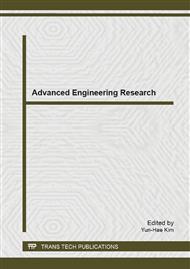p.1443
p.1448
p.1452
p.1456
p.1460
p.1464
p.1471
p.1479
p.1483
Distributed SWAT Model for Ecological Remediation Project Assessment
Abstract:
In arid area, ecological remediation aims at decreasing soil erosion by foresting. Distributed SWAT model is further improved model of integrated model, capable of analyzing the relation between river runoff, sediment and land use change by human activities. In this study, distributed SWAT model is built in the Heihe River Basin to simulate watershed water and sand conditions, and natural state of river runoff and sediment without ecological remediation project is estimated. Significant differences are observed between the estimated natural state runoff and sediment and conditions after the remediation projects. This provides valuable reference for effect assessment of Heihe River Basin ecological remediation project.
Info:
Periodical:
Pages:
1460-1463
Citation:
Online since:
April 2014
Authors:
Keywords:
Price:
Сopyright:
© 2014 Trans Tech Publications Ltd. All Rights Reserved
Share:
Citation:


